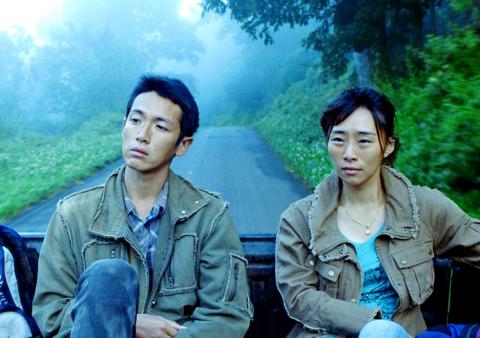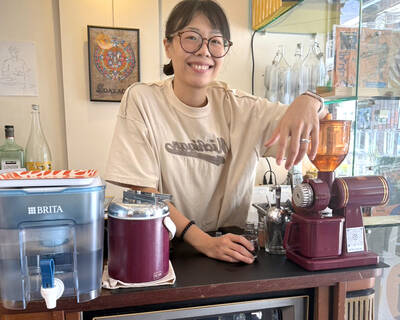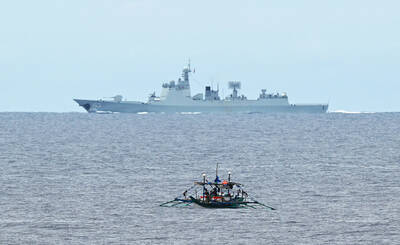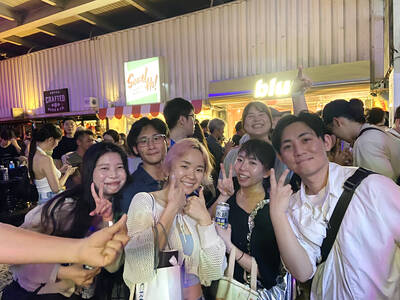There’s really nothing wrong with The Road to Mandalay (再見瓦城), except for the fact that it keeps being billed as a “beautiful and sad love story.” Superbly shot, it is a poignant and emotional ride featuring illegal Chinese-Burmese immigrants who struggle to make a living in Thailand. As far as romance goes, though, it’s either very, very subtle or their perception of it is somewhat different from the mainstream.
The problem is an utter lack of intimacy — or even meaningful conversation between the two leads, as they do spend a lot of time together but in a detached, silent matter. There’s probably just one scene of tenderness, and for the most part the behavior of Guo (Kai Ko, 柯震東), the male lead, is just downright creepy and obsessive: there’s nothing romantic about someone you barely know going into your room, grabbing all your belongings and insisting that you quit your job and go work somewhere else.
And female lead Lianqing (Patty Wu, 吳可熙) never appears to be receptive to Guo’s awkward advances. So it is a bit of a shock when she says at the end of the movie that he is her boyfriend.

Photo courtesy of atmovies.com
From the context of the movie alone, however, the two actors deliver great performances as migrants seeking a better life while harboring different dreams and hopes for the future. Wu does a superb job of playing the quiet and seemingly frail girl who harbors great resolve, and her determination to move forward pretty much drives the film. Ko provides the counterpoint to Wu’s steadfastness, convincingly delivering the role of an insecure and emotionally repressed young man who does not know what to do with his affections.
Their intertwined lives in Thailand make up the bulk of the story, and even without the romance, the story reflects the migrant experience well, touching on many issues such as the lack of work permit, prostitution, corrupt officials, mistreatment of workers and drug use.
This is Midi Z’s (趙德胤) first commercial feature and a continuation of his exploration of his roots, which is ethnic Han Chinese living in Myanmar. After shooting his last fictional piece, Ice Poison (冰毒), he took a break from fiction and shot two documentaries, Jade Miners (挖玉石的人) and City of Jade (翡翠之城), also set in Myanmar.
The increase in budget is apparent with the slick production, with Jia Zhangke’s (賈樟柯) longtime editor Matthieu Laclau providing tighter editing. Maybe it is too tight, though, as one wonders if some of the more “romantic” scenes may have been lost in the mix. It’s already known that an episode featuring Ko masturbating was cut.
In any event, despite its mainstream status, the film still leans toward the artsy and festival circuit, with long still frames, slow pacing and few dramatic ups and downs. This works with the subjects, however, adding to the tension and desperateness of their situation, where they work long, grueling hours toward an uncertain future.
The backdrop is carefully crafted to match this mood, as this version of Bangkok seems nothing like the shiny and energetic portrayals we often see in other films. It’s drab, and it’s sad. And it’s probably no accident that the most beautiful scenes appear in the factory, one in particular where Lianqing tries to untangle a sea of threads stretched out by machines.
This symbolism manifests in several scenes, such as when Guo furiously shovels wood into a furnace and Lianqing’s encounter with a giant iguana. There’s a lot of guessing to do in this film, and much thinking to do after.
It’s a slow burning affair, all right, but it does burn, fueled by a slice of life that’s rooted in harsh reality and nothing much else. Not everyone wants to see the uncomfortable truth, and not everyone will like this movie. But someone had to tell this story.

Cheng Ching-hsiang (鄭青祥) turned a small triangle of concrete jammed between two old shops into a cool little bar called 9dimension. In front of the shop, a steampunk-like structure was welded by himself to serve as a booth where he prepares cocktails. “Yancheng used to be just old people,” he says, “but now young people are coming and creating the New Yancheng.” Around the corner, Yu Hsiu-jao (饒毓琇), opened Tiny Cafe. True to its name, it is the size of a cupboard and serves cold-brewed coffee. “Small shops are so special and have personality,” she says, “people come to Yancheng to find such treasures.” She

Late last month Philippines Foreign Affairs Secretary Theresa Lazaro told the Philippine Senate that the nation has sufficient funds to evacuate the nearly 170,000 Filipino residents in Taiwan, 84 percent of whom are migrant workers, in the event of war. Agencies have been exploring evacuation scenarios since early this year, she said. She also observed that since the Philippines has only limited ships, the government is consulting security agencies for alternatives. Filipinos are a distant third in overall migrant worker population. Indonesia has over 248,000 workers, followed by roughly 240,000 Vietnamese. It should be noted that there are another 170,000

Hannah Liao (廖宸萱) recalls the harassment she experienced on dating apps, an experience that left her frightened and disgusted. “I’ve tried some voice-based dating apps,” the 30-year-old says. “Right away, some guys would say things like, ‘Wanna talk dirty?’ or ‘Wanna suck my d**k?’” she says. Liao’s story is not unique. Ministry of Health and Welfare statistics show a more than 50 percent rise in sexual assault cases related to online encounters over the past five years. In 2023 alone, women comprised 7,698 of the 9,413 reported victims. Faced with a dating landscape that can feel more predatory than promising, many in

Former Chinese Nationalist Party (KMT) chairwoman Hung Hsiu-chu’s (洪秀柱) attendance at the Chinese Communist Party’s (CPP) “Chinese People’s War of Resistance Against Japanese Aggression and the World Anti-Fascist War” parade in Beijing is infuriating, embarrassing and insulting to nearly everyone in Taiwan, and Taiwan’s friends and allies. She is also ripping off bandages and pouring salt into old wounds. In the process she managed to tie both the KMT and the Democratic Progressive Party (DPP) into uncomfortable knots. The KMT continues to honor their heroic fighters, who defended China against the invading Japanese Empire, which inflicted unimaginable horrors on the